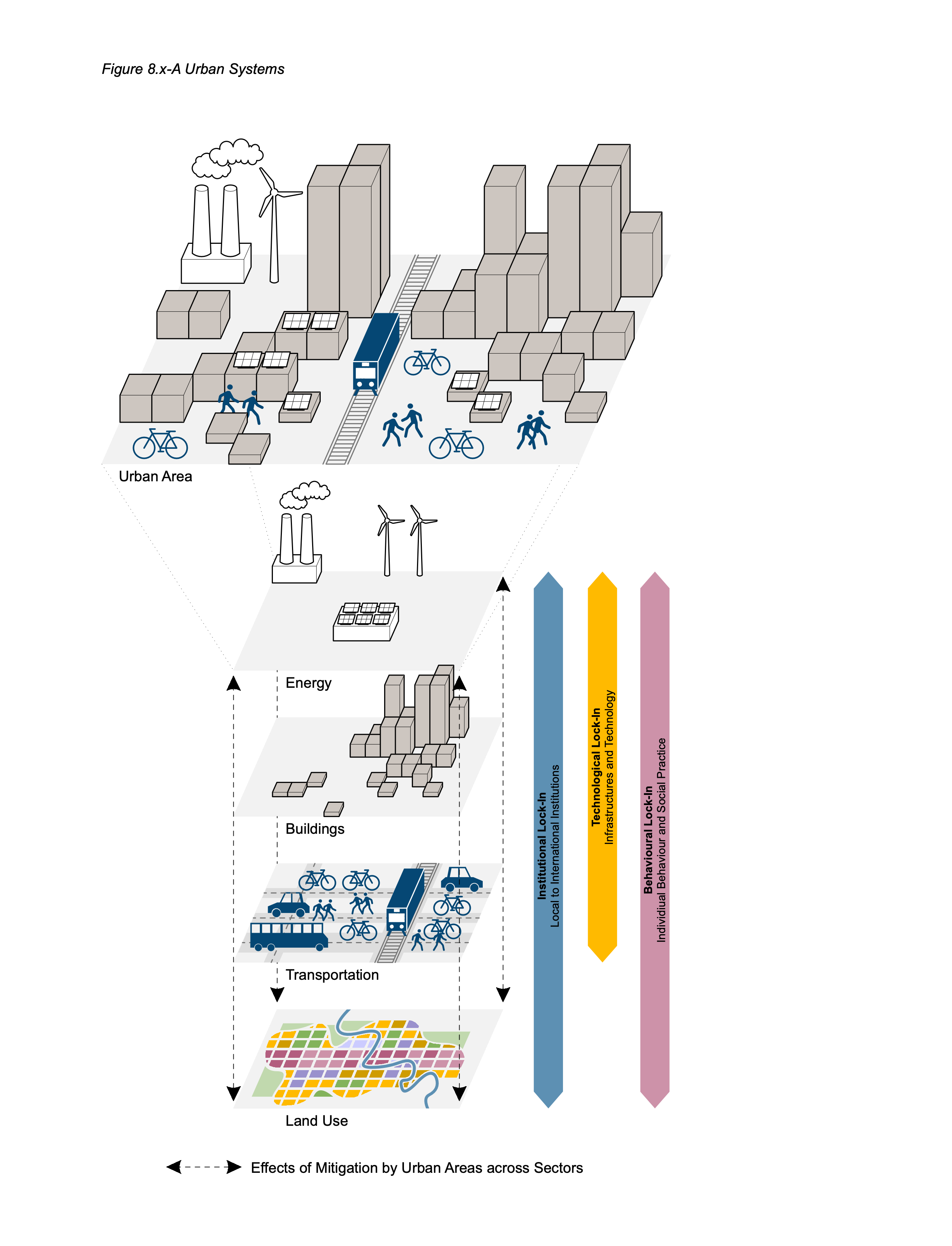Figure 8.15
Figure caption
Figure 8.15: Urban systems, lock-in, and cascading effects of mitigation strategies.Figure 8.15 (continued): Urban systems, lock-in, and cascading effects of mitigation strategies. Cities are systems of interconnected sectors, activities, and governance structures. Urban-scale mitigation action can have cascading effects across multiple sectors, as shown in panel (a), as well as regional, national, and global impacts through supply chains, resource flows, and institutions, as shown in panel (b). Mitigation efforts implemented at larger scales of governance or in sectors that transcend urban boundaries, like energy and transportation, can also facilitate and amplify mitigation at the urban scale, as shown by the arrows extending in both directions across layers (a). Because urban areas are connected locally and globally, urban mitigation efforts can also impact other cities and surrounding areas (agriculture, forestry and other land use (AFOLU)). Cities are prone to carbon lock-in due to the numerous reinforcing interactions among urban infrastructures and technologies, institutions, and individual and collective behaviours; see the side arrows extending across the layers in panel (a): the yellow arrow represents the infrastructure and technological lock-in involving user technologies and supporting infrastructure, the blue arrow indicates lock-in of local to international institutions, and the pink arrow represents behavioural lock-in for individuals and society. Urban carbon lock-in is strongly determined by urban form, in particular the layout of streets and land-use mix. The different coloured spatial patterns represent varying levels of co-location of housing and jobs, and mobility options (Figure 8.16). Efforts to break urban carbon lock-in require meta-transformations to break inertia in and among infrastructures, institutions, and behaviours. Source: adapted in part from Seto et al. (2016).
